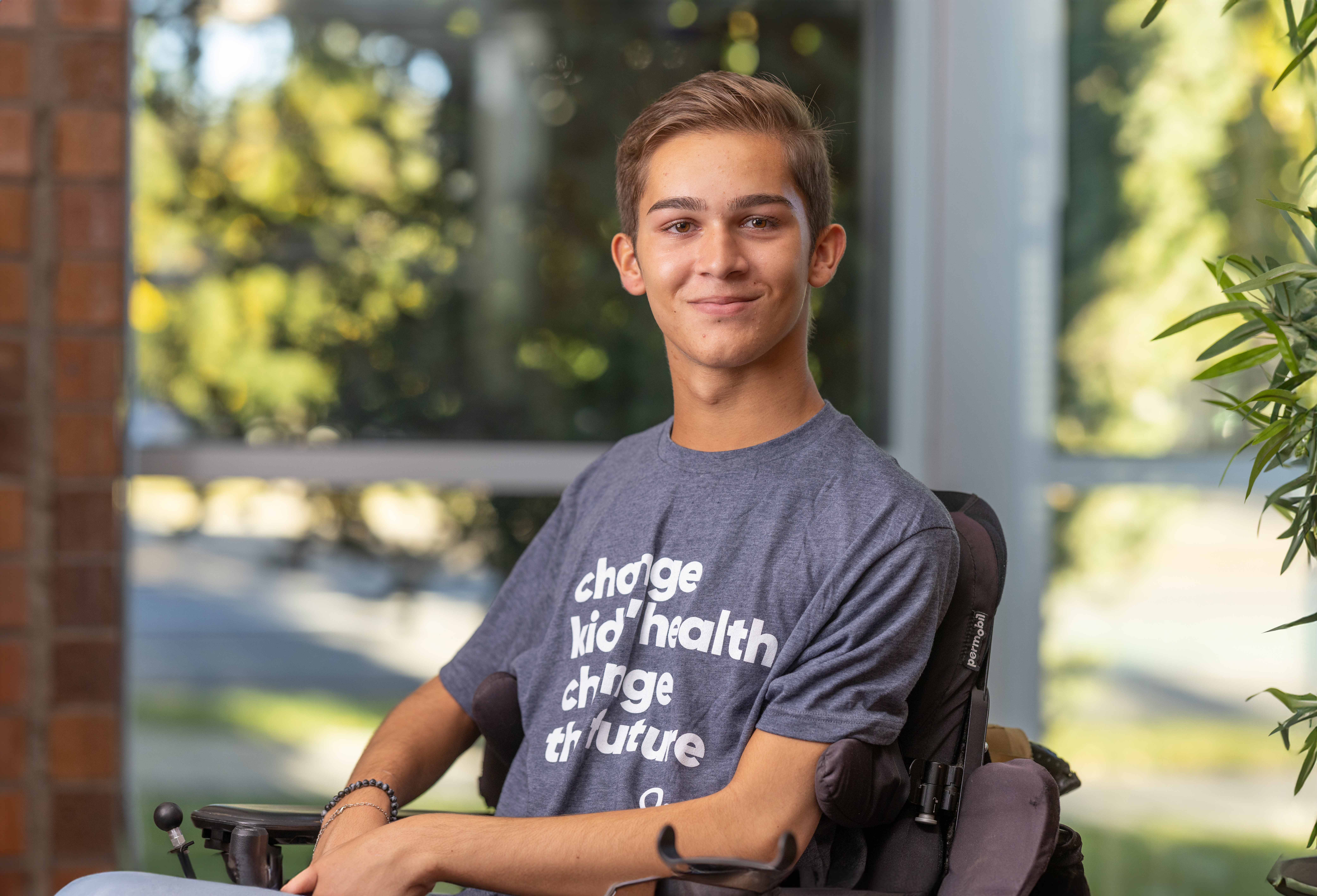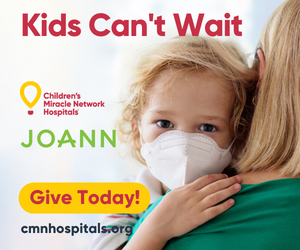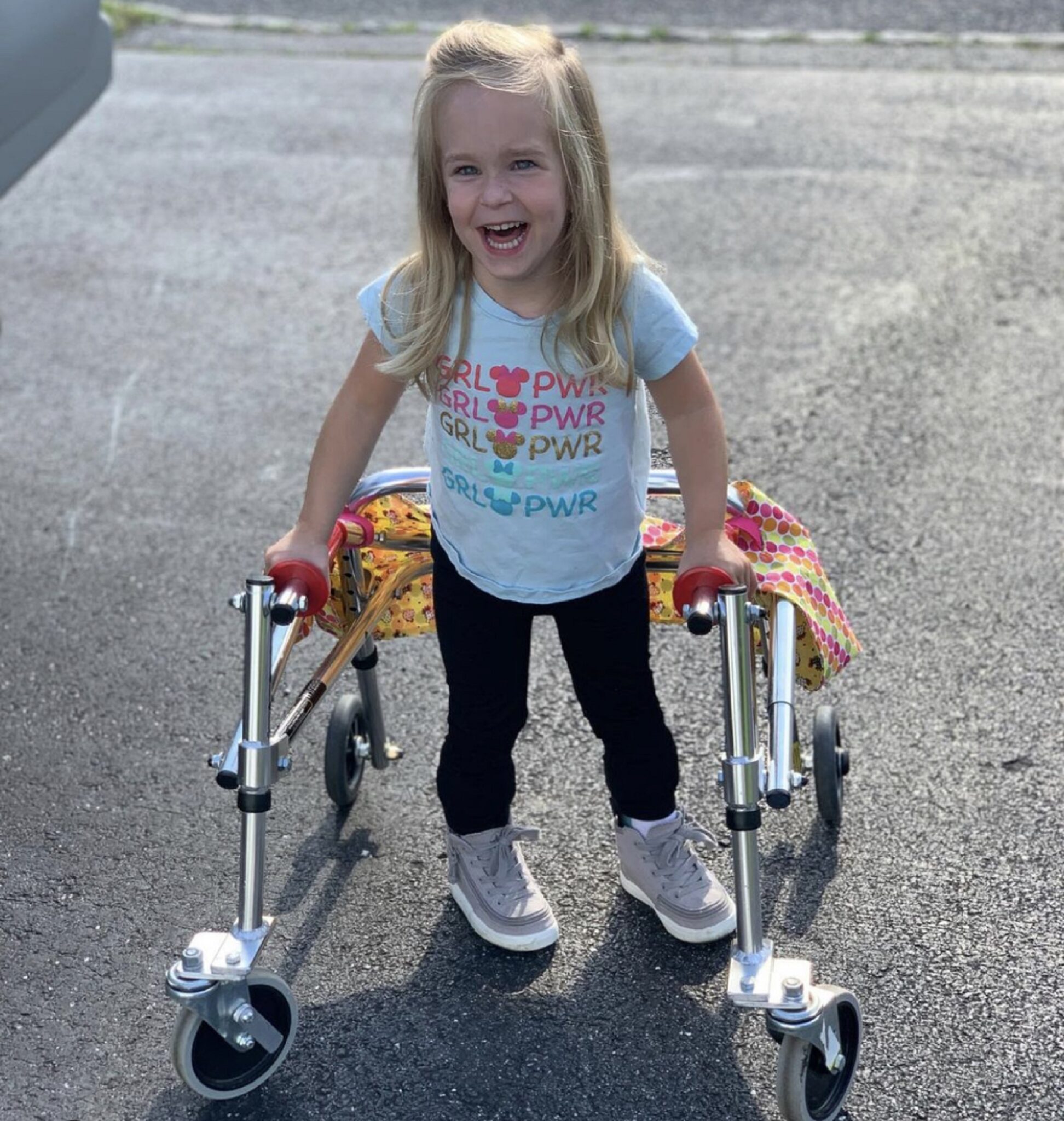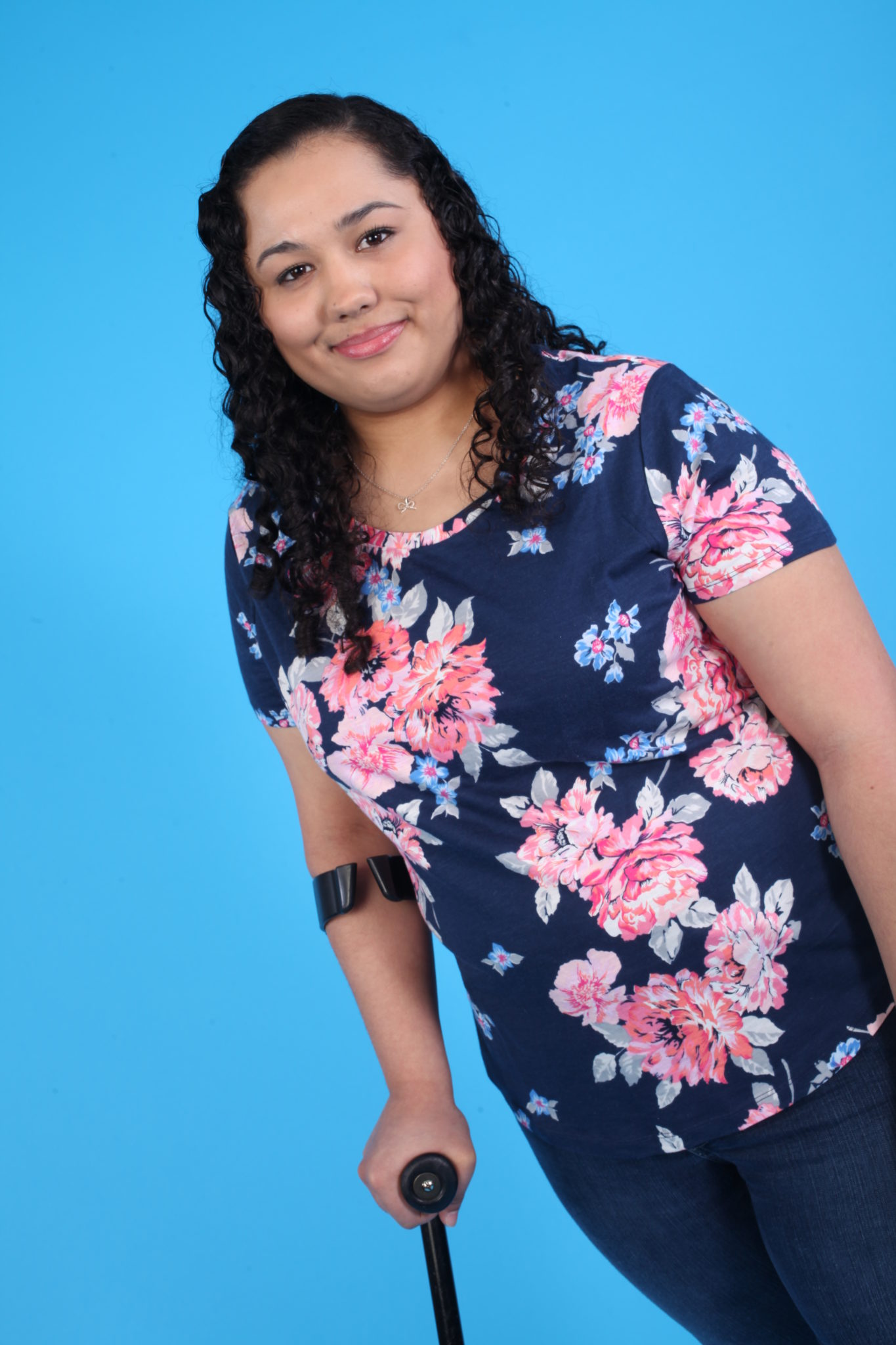Who We Are & What We Do: Cerebral Palsy Program
 As the country’s largest provider of pediatric medical rehabilitation, Children’s Specialized Hospital, is a leading provider of care to children and teens with cerebral palsy and their families. We have served kids with cerebral palsy for over 100 years yet we incorporate cutting edge technology and individualized treatment techniques within our comprehensive cerebral palsy program. Our program is one of the most comprehensive in the country. Our family-centered care approach provides treatment from infancy through transition to adulthood.
As the country’s largest provider of pediatric medical rehabilitation, Children’s Specialized Hospital, is a leading provider of care to children and teens with cerebral palsy and their families. We have served kids with cerebral palsy for over 100 years yet we incorporate cutting edge technology and individualized treatment techniques within our comprehensive cerebral palsy program. Our program is one of the most comprehensive in the country. Our family-centered care approach provides treatment from infancy through transition to adulthood.
What Is Cerebral Palsy?
Cerebral palsy (CP) is a term that covers different neuromuscular disorders caused by damage to the brain around the time of birth or early life. Cerebral relates to the brain, while palsy refers to problems using muscles. Cerebral palsy typically affects muscle coordination, motor development, movement, reflexes and balance. It can range from mild to severe. While there is no cure, but there are plenty of options for assisting people with CP to reach their maximum functioning.
Causes And Risk Factors
There are numerous causes of cerebral palsy, all occurring during pregnancy, or shortly after birth. Risk factors for CP include prematurity; very low birth weight; bleeding in the brain before, during or after birth; brain trauma; seizures at birth or very soon after birth; maternal infections; infections within the brain like meningitis and encephalitis; genetic abnormalities; chemical use during pregnancy; and lack of oxygen to the brain during pregnancy or soon after. Cerebral palsy is not uncommon, occurring in approximately 3.3 of every 1000 births.
Types Of Cerebral Palsy
There are various types of cerebral palsy that may affect different parts of the body and may range from having a mild to having a severe impact on everyday life:
- Spastic cerebral palsy is the most common form, affecting 80% of those with cerebral palsy. It is characterized by increased muscle tone. Muscles are tight and stiff. Spastic CP is further divided into subtypes based on which parts of the body are affected:
- Diplegia affects the legs, more than the arms. This is most common in CP related to prematurity.
- Hemiplegia affects one side of the body (arm and leg on the same side) and is most common in CP related to early strokes or brain trauma.
- Quadriplegia affects all four limbs (both arms and legs) and is most common in CP related to lack of oxygen early in life.
- Dyskinetic cerebral palsy is characterized by uncontrolled fluctuations in muscle tone, and involuntary and sporadic movements. Dyskinetic CP is often associated with tremors and difficulty with balance and coordination.
- Mixed cerebral palsy includes traits of both spastic and dyskinetic CP.
- Ataxic cerebral palsy is the least common type, affecting 6% of those with CP. It causes an interruption of muscle control in the arms and legs resulting in what appears as clumsy, unstable and disorganized movement.
Signs And Symptoms Of Cerebral Palsy
Primary:
- Abnormal muscle tone (increased or decreased muscle tone)
- Muscles that pull unevenly on the joints
- Abnormal reflexes
- Balance and movement difficulties
- Delayed motor milestones (holding head up, sitting, standing, walking)
Secondary Difficulties:
- Muscle contractures due to problems with muscle growth
- Bone deformities
- Misalignment of the joints
- Easily tired with movement
- Pain
Possible Additional Difficulties/Co-Morbidities:
- Learning problems or cognitive impairment
- Feeding and swallowing problems
- Speech/language problems
- Seizure disorder
- Sensory issues
- Breathing difficulties
- Vision and hearing problems
- Sleep problems
- Depression, anxiety and social issues
How Is Cerebral Palsy Diagnosed?
There is no single test for diagnosing cerebral palsy. It requires knowledge of the child’s medical history and observation of symptoms. In some cases, babies are diagnosed soon after birth. The typical age of diagnosis is between 1 and 3 years. Diagnostic procedures may include:
- Magnetic resonance imaging (MRI)
- Computed tomography (CT) scan
- Cranial ultrasound
- Physiatry evaluation
- Neurological evaluation
- Laboratory studies including blood and urine tests
Additional tests that may help clarify diagnosis and related conditions include:
- EEG
- Gait analysis
- Developmental assessment
Children’s Specialized Hospital’s Treatment Approach:
Patient-and-Family-Centered Care is our philosophy of partnering with every child and family in all that we do. This is our standard of care throughout Children’s Specialized Hospital. You will see this in our staff’s interactions with your child and family at every step of your journey. We focus on maximizing quality of life and independence and prevention of further impairment. Care coordination is essential in recognition of the importance of linking care and communication across patient/family and multiple providers, including school. Our medical specialists are experts in complex care management. Our therapists are experts in treating children with developmental disabilities and include staff members who are NDT certified.
Evaluation Services
- Physician specialties – Physiatry, Neurology, Developmental & Behavioral Pediatrics, Psychiatry, and Orthopedics
- Therapies – Physical Therapy, Occupational Therapy, Psychology, Speech Therapy, Audiology, Neuropsychology, Rehabilitation technology including seating and mobility and ordering durable equipment, Comprehensive Feeding Team, Augmentative and Alternative Communication (AAC), Nutrition, and Early Intervention
Treatment
While the diagnosis of cerebral palsy may be permanent, treatment can make a big difference in maximizing function, independence and quality of life. Since cerebral palsy can affect various functions, children and adolescents with CP benefit from Children’s Specialized Hospital’s multidisciplinary team of experts in physiatry, neurology, developmental medicine, physical therapy, occupational therapy, speech/language therapy, behavioral health, audiology, nutrition, augmentative communication, and rehabilitation technology.
- General Rehabilitation for post orthopedic surgery (soft tissue lengthening, muscle transfer or hip surgery, spinal fusion for scoliosis), post neurosurgery (dorsal rhizotomy, baclofen pump insertion or shunt revision)
- Physician Specialties
- Special Needs Primary Care provides a medical home approach for both the child with special needs and his/her typically developing siblings
- Therapy Services – Physical Therapy, Aquatics (pool therapy), Occupational Therapy, Psychology, Speech Therapy, Audiology, Neuropsychology, Rehabilitation Technology, Feeding, Augmentative, Nutrition, and Early Intervention
- Procedural
- Extensive neurolysis services: Alcohol nerve blocks for spasticity involve an injection of alcohol near the nerve that controls a muscle in order to relax the spastic muscle. The effects may last several months.
- Botox using ultrasound: Botox is used to relax muscles, reduce spasticity, and help patients with CP move more with less pain. The ultrasound is used to guide the injections to the best location near the nerve endings next to the muscles.
- Electric stimulation: Electric stimulation emits low dosing of electric currents to muscles that are stiff. The low electric currents aim to decrease spasticity and reduce muscle stiffness which may improve balance.
- Serial casting: Serial casting involves a procedure with the application of a fiberglass cast (with padding) to a body part with the goal of stretching tight muscles. The cast can be applied weekly and stay on for several days keeping the tight muscles in a stretched position. The goal is to stretch joints and increase range of motion in order to promote functioning.
- Orthotics and prosthetics: Orthotics are external braces that are designed to fit each patient’s physical and functional needs. They are designed to help children establish normal joint and muscle motions. Prosthetics are devices that replace joint/muscle functions.
- Dynamic splinting: A dynamic splint is a tensioning device that can help expand joint range of motion and strengthen function. Splints can be adjusted to fit size, shape, as well as adjusted to levels of tissue development.
- Kinesthiotaping: Kinesthiotaping provides support and stability to muscles and joints without restricting the body’s range of motion.
- Camps such as Camp Chatterbox, BECOME, Pals’ Paradise day camp, and Camp Kresge overnight camp
- Community Recreational Sports programs such as Lightning Wheels paralympic sports team, aquatics, and martial arts
- Social and Recreational Programs such as the Friday Night Fever social program for teens with disabilities
Advanced Technologies Used In Treatment
- Zero G: Zero G is a machine that supports a portion of body weight which is helpful in promoting motor skill development such as standing, bending and walking. Zero G also encourages development of balance and promotes confidence and increased use of the upper extremities.
- Vertical treadmill rock climbing: Engaging in rock climbing can promote muscular development and strength for those with CP. It may also help develop cognitive ability, focus and self-confidence.
- GaitRite technology is an electronic walkway that records and analyzes a person’s gait and balance. This helps develop a truly individualized treatment plan.
- Red Cord system for neuromuscular strengthening: Red cord is a suspension-exercise therapy that strengthens movement patterns with controlled levels of neuromuscular stimulation. Red Cord can be adjusted for patients of all sizes, shapes and ages, and promotes both immediate, long lasting results.
- Electrostimulation units provide muscles with a low dosing of electric current in order to decrease stiffness and spasticity. Used as part of therapy, electrostimulation may reduce contractures.
Family and Healthcare Team Communication
- My Children’s Specialized Patient and Family Portal: Our online portal helps patients and families communicate quickly with the treatment team and provides immediate access to the patient’s medical record, prescription refills and scheduling follow-up appointments.
- Tablet registration: Our efficient tablet system allows for patients to register and to make sure insurance information is current and accurate
Research
Our team is involved in clinical research to develop best models of care. Recent research studies include:
- Use of commercially available movement sensors for individuals with gait deviations
- Effect of rock climbing on patient quality of life
- Functional electrical stimulation foot drop system/brace for children with hemiparesis
- Development of assessment tools for tracking developmental trajectory of children with CP
- Use of exoskeleton technology to assist motor functioning







